Biting into a juicy pear picked from your own tree is a pleasure that shouldn’t be missed!
A wonderful addition to the garden or landscape, pear trees provide delicious fall fruit as well as multiple seasons of ornamental interest.
They offer sensational clouds of fragrant spring blossoms, fruit-laden branches in summer, pretty fall foliage in shades of burgundy, orange, red, and yellow, and a charming winter silhouette.
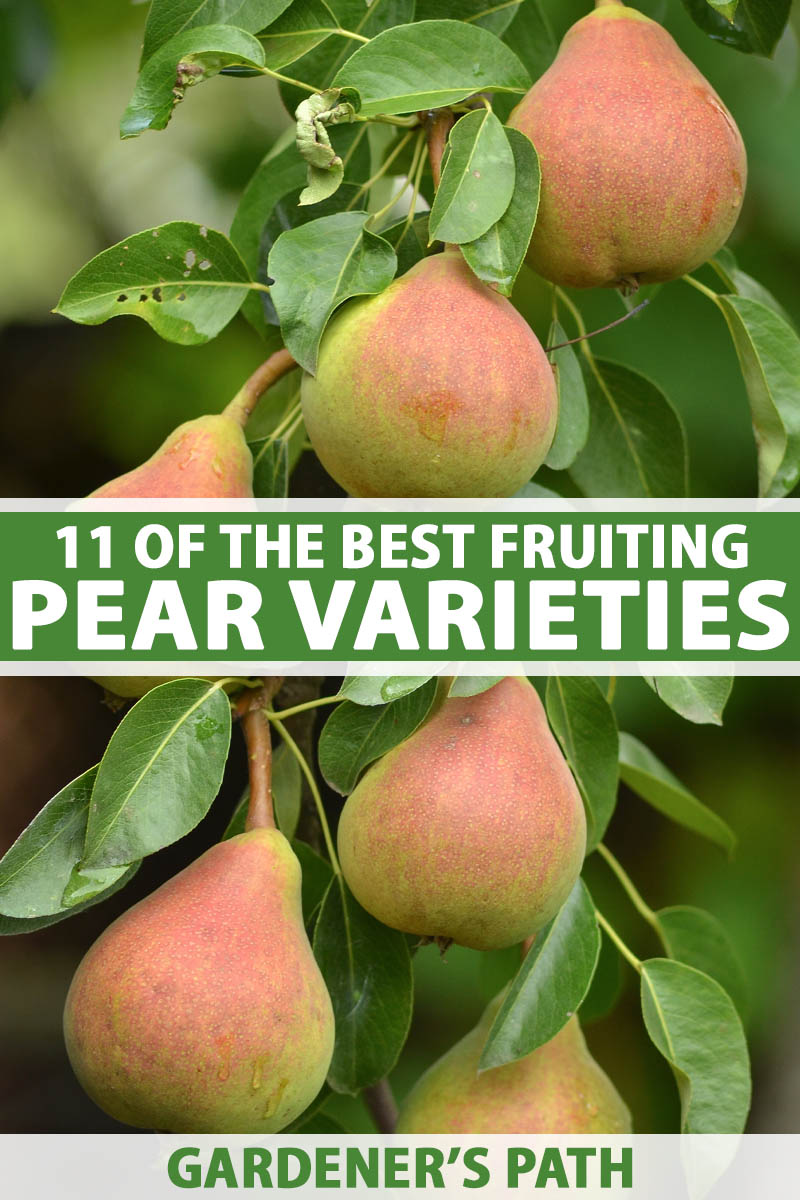
We link to vendors to help you find relevant products. If you buy from one of our links, we may earn a commission.
Easy to cultivate, they’re also productive and deliver high yields of fruit.
Mature specimens can grow up to 30 feet tall, and they serve as a large, striking presence in the landscape.
And there are also many outstanding dwarf and semi-dwarf varieties available. These can be neatly tucked into smaller yards, and some can be grown in containers as well.
Attractive and aromatic fruits come in a range of colors, shapes, and sizes as well as slightly different flavors and textures. Most are hardy enough to be grown in cold regions, but there are good options for reliable production in warmer areas as well.
And many make excellent keepers, with storage times of up to six months in ideal conditions.
To help you make the best selection for your garden, here’s a look at the best types of pear trees to grow at home.
11 of The Best Pear Varieties to Grow
Pear Tree Primer
Pears belong to the genus Pyrus of the Rosaceae family. Species are typically divided into two groupings: the fruiting varieties, and the non-fruiting or ornamental ones.
The ornamentals may produce small fruits, but they’re generally inedible. These species are grown primarily for their spring blossoms and colorful autumn foliage.
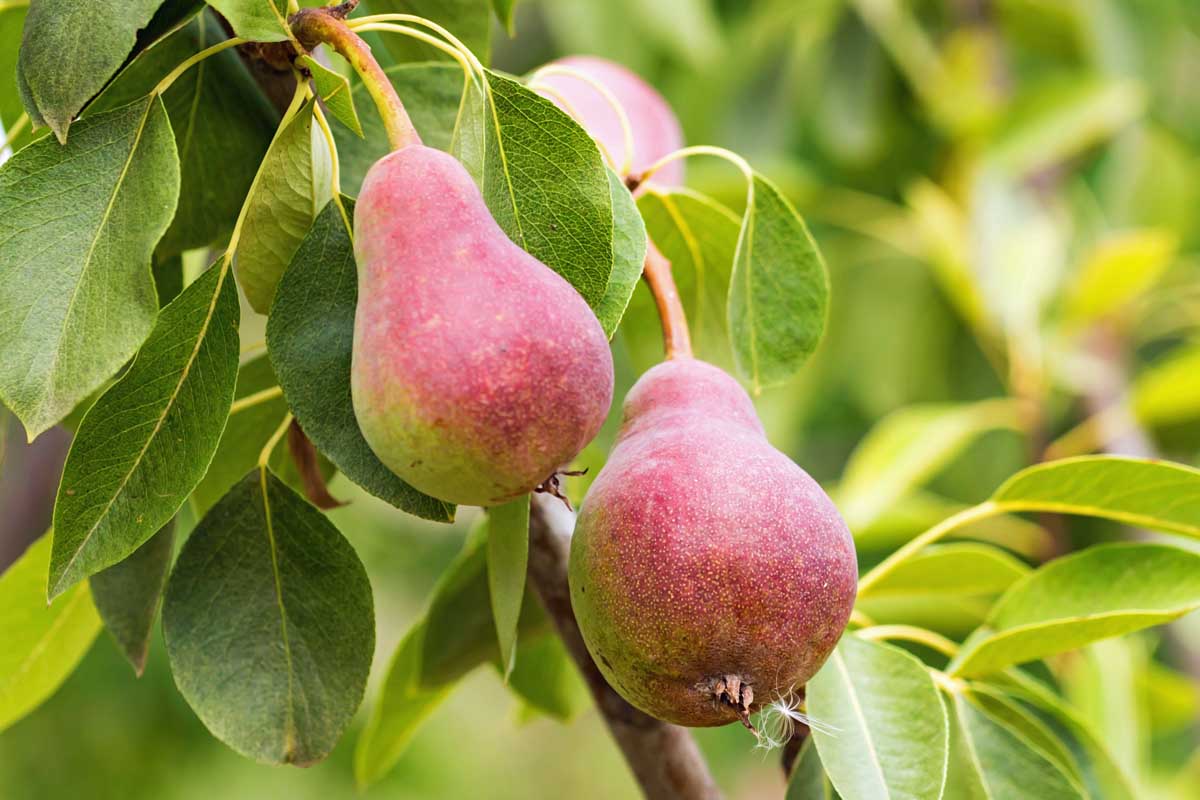
Fruiting pears are known for their longevity, with some cultivars delivering productive crops for up to 100 years! Fruit bearers come from two main species, Asian and European pears, and their hybrids.
The Asian type, P. pyrifolia, have round fruits that are crisp with an explosively juicy texture, much like an apple. These fruits are ripened on the branch before picking.
You can learn more about Asian pears in our growing guide.
Those of the European type, P. communis, are soft fleshed with a buttery, melting texture. These have the classic teardrop pear shape that most of us are familiar with.
The fruit of P. communis cultivars are picked when they are green, and they need to ripen in storage. When left on the branch to ripen, the texture can become mealy and fruits can suffer from core breakdown or rotting from the inside.
You can find the details on how to handle and store pears in this guide.
For container growth, ensure your selection is a dwarf variety or one bred specifically for growing in a container.
Most varieties are grafted onto rootstock, which controls the tree’s mature size.
Standard rootstock can grow up to 30 feet, while dwarf rootstock typically grows only eight to 10 feet. Semi-dwarf rootstock grows 12 to 18 feet.
But please note that the fruit of dwarf cultivars is full size – only the tree’s overall growth is minimized.
Also, you will need to be a little patient… it can take from three to ten years before these plants begin to flower and set fruit.
But it’s worth the wait – once they do start bearing fruit, harvests are plentiful.
Hardiness Zones for growth can vary considerably between cultivars, as do vernalization requirements.
European types typically need a winter chill of 400 to 900 hours at 45°F or below, but there are some low-chill cultivars available as well.
Pollination Guide
Some varieties of pears are self-pollinating and yield a decent harvest if you plant just one.
But most require cross pollination from different cultivars that bloom at the same time for the best crop.
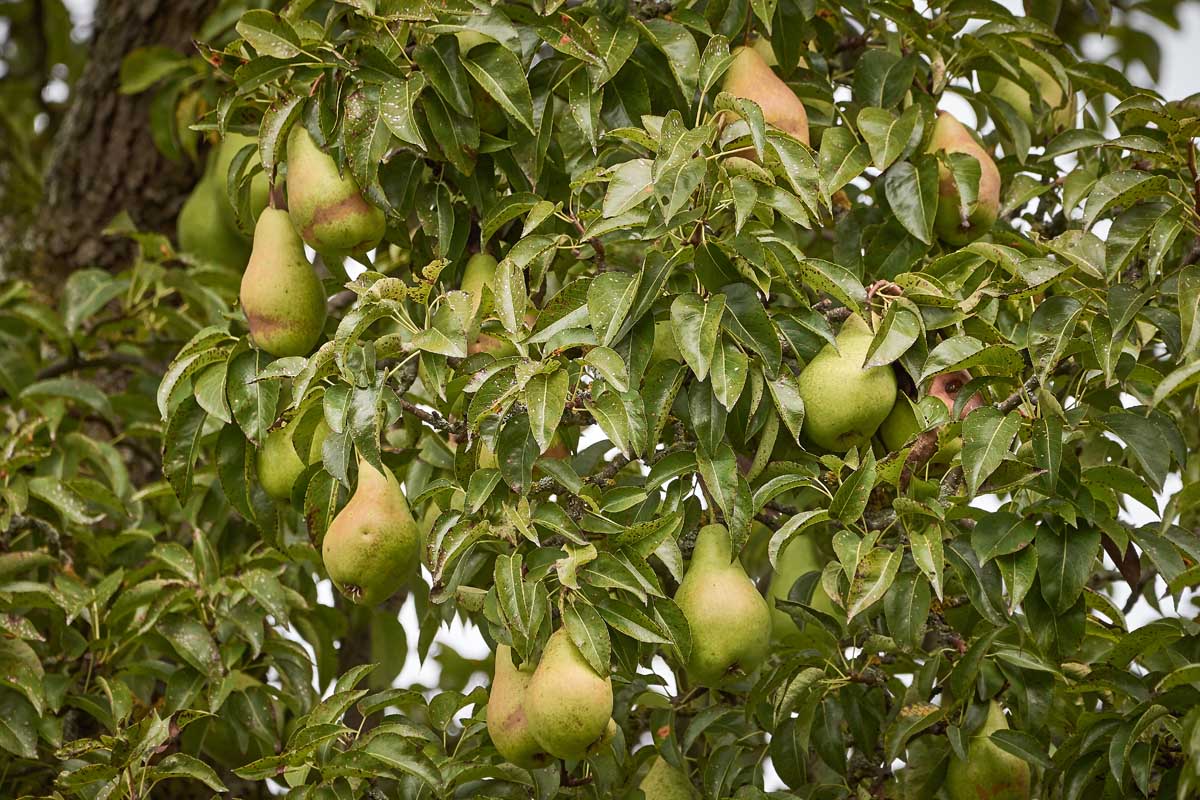
Different species within the Pyrus genus can cross pollinate, so you can plant an Asian pear cultivar that blooms at the same time as your European type.
And even the self-fruitful types benefit from proximity with others, because this increases their chances of pollination.
While lovely to look at, pear blossoms have a low concentration of sugar in their nectar – which is not good for attracting foraging bees. And they aren’t candidates for wind pollination.
Planting one or more specimens that bloom at the same time is much more attractive to bees. And they do a better job of pollinating when they have a greater abundance of blossoms to visit.
Planting multiples isn’t always practical, so if you have a small yard, check what’s growing in your neighbors’ yards.
Trees can receive beneficial cross pollination provided they’re not further than 100 yards apart (or 20 yards for dwarf varieties). And they must flower at the same time.
Pears are loosely arranged together into pollination groups. And although there’s no set definition of these groups, the general idea is simple: group 1 is the earliest to flower, while group 6 is the latest.
Find details on pear pollination here.
Top Pear Cultivars
The following is a popular cross-section of European-type cultivars for the home garden.
Some of those listed are self-pollinating, but remember that you’ll likely have higher yields when these are planted with other varieties that flower at the same time.
1. Anjou
An old-time favorite, ‘Anjou’ produces large, short-necked fruits that are pale green with a light pink blush.
The buttery flesh is sweet and juicy with subtle hints of citrus, and it’s delicious for fresh eating or preserves. An excellent keeper, fruits can be stored for up to six months.
Fragrant, creamy white blossoms cover branches in early spring and glossy, deep green leaves show red and yellow in fall. Fruits are ready to pick from mid-September to mid-October.
Trees grow 12 to 18 feet tall with a spread of eight to 20 feet in an upright, oval form. ‘Anjou’ requires 800 chill hours and requires cross pollination from cultivars with a similar bloom time. Hardy in Zones 4 to 9.
Container specimens can be purchased at Nature Hills Nursery.
2. Baldwin
‘Baldwin’ produces attractive, oblong fruit in light yellow with a red tint. The sweet, semi-firm flesh makes a good choice for baking, fresh eating, and canning.
The white blossoms are tinged with pink and flower in early spring, and fruits are ready to pick beginning in mid-August. Self-pollinating, this cultivar produces a better crop when cross pollinated with other early blooming varieties.
‘Baldwin’ has an upright, oval growth habit and a mature height 15 to 25 feet with a spread of 15 to 20 feet. Hardy in Zones 5 to 9, this is a low chill cultivar that requires only 150 chilling hours in the winter, making it a good choice for warmer regions.
Trees in five-gallon containers are available at Home Depot.
3. Bartlett
The most popular of all pears, ‘Bartlett,’ also called ‘Williams’ in Europe, develops large yellow or red bell-shaped fruits with buttery, smooth, juicy white flesh.
Ideal for eating fresh and for canning or preserves, the fruit can be stored for one to two months.
Branches are adorned with showy white blossoms in early spring, and harvest begins around the end of August. Leaves give a vivid show of yellow in autumn.
‘Bartlett’ requires cross-pollination from other cultivars in the same pollination group.
These have a vigorous, upright, round growth habit reaching heights of 12 to 20 feet with a spread of 10 to 20 feet.
Hardy in Zones 5 to 7, ‘Bartlett’ requires 800 chill hours below 45°F. A long-living cultivar, these have been known to bear productive crops for up to 100 years!
Container specimens in a variety of sizes can be purchased at FastGrowingTrees.com.
Find more tips on growing ‘Bartlett’ pears here.
4. Bosc
Another favorite, ‘Bosc’ pears are elegant and pretty. They feature an oblong shape with warm, cinnamon colored skin and a unique flavor – honey sweet with a woodsy hint of spice.
Delicious for fresh eating, the firm flesh makes a great choice for baking as well. Fruits will keep in cold storage for up to three months.
White blossoms show in early spring, and the glossy green leaves turn a deep purplish burgundy in autumn.
Harvest begins in early September. ‘Bosc’ requires cross pollination from other early bloomers.
It has a strong, upright growth habit and a round form with a mature height of 12 to 18 feet and a spread of eight to 20 feet. Hardy in Zones 4 to 9, ‘Bosc’ requires 500 to 600 chill hours.
Container trees are available from Nature Hills Nursery.
5. Comice
‘Comice’ fruits are sweet and succulent with a firm texture. The light green skin has a rosy blush and a plump silhouette.
The aromatic flesh is buttery and delicious for fresh eating, and this cultivar makes a good choice for canning or baking as well. Fruits last up to three months in cold storage.
Tufts of fragrant white blossoms adorn the upright, oval canopy in mid- to late spring, and the oval, glossy green leaves turn to bright shades of red and yellow in fall.
A semi-dwarf variety, ‘Comice’ has a mature height of 12 to 18 feet with a spread of eight to 12 feet.
Fruits are ready to harvest from mid-September to mid-October, and ‘Comice’ is considered a low-chill cultivar with 200 to 600 chill hours required. Hardy in Zones 4 to 9, this variety requires cross pollination from other mid-season bloomers.
Container trees can be purchased from Nature Hills Nursery.
6. Hood
‘Hood’ is one of the preferred cultivars for growing in warmer regions. It produces chartreuse green pears with russet mottling.
The flesh is sweet and mild with a melting texture – perfect for fresh eating, they’re also good for baking and canning.
Soft, white blooms emerge in early spring followed by large, squat fruits that ripen in early August. Fall leaves put on an attractive show of yellow and orange.
The upright, oval form has a mature height of 15 to 20 feet with a spread of 12 to 15 feet.
Partially self-fertile, this type produces a larger crop when cross pollinated with other cultivars that flower at the same time. Hardy in Zones 7 to 9, ‘Hood’ requires only 100 to 200 chill hours.
Container specimens are available at the Perfect Plants Nursery.
7. Kieffer
‘Kieffer’ is an interspecific hybrid cross between ‘Bartlett’ and P. pyrifolia, the Asian pear. An interspecific hybrid means it’s a cross between two different species.
This cultivar produces large, oblong fruits of yellow with a light russet spotting and sometimes a rosy blush. The white flesh is crisp and coarse, well suited for baking, canning, and making jam and other types of preserves.
Large tufts of fragrant white flowers bloom in late spring with fruit that is ready to harvest from mid-September to mid-October.
Glossy green leaves provide warm shades of yellow and bronze in fall. Self-fertile, this cultivar bears a larger crop when cross pollinated with similar late-blooming cultivars.
Hardy in cold climates, it’s also popular for its vigorous growth in warmer regions, and requires a modest 350 to 400 chilling hours. ‘Kieffer’ has a mature height of 10 to 20 feet and a similar spread. Hardy in Zones 4 to 9.
Container trees can be purchased at Nature Hills Nursery.
8. Pineapple
Another hybrid of P. communis and P. pyrifolia, ‘Pineapple’ delivers large, oblong pears with a golden skin and russet overtones, and the occasional rosy blush.
The white flesh is crisp and grainy with a unique pear/pineapple flavor that can be enjoyed fresh or made into preserves.
Delicate white blossoms flower in early spring and fruit can be picked starting in mid-July. In autumn, the shiny green leaves give way to shades of yellow.
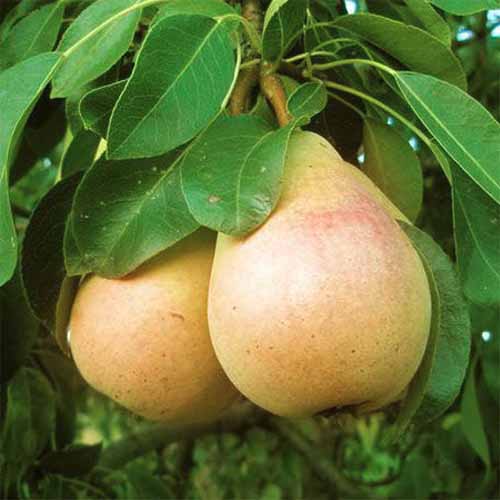
Self-fertile, ‘Pineapple’ produces a larger crop when planted with another early-blooming cultivar.
A good choice for warm regions, it requires only 150 chill hours. Fully grown, the upright, oval trees reach 15 to 20 feet tall with a width of 12 to 15 feet. Hardy in Zones 5 to 9.
You can find container trees available from the Perfect Plants Nursery.
9. Seckel
A hybrid cross of P. communis and P. pyrifolia, early-season ‘Seckel’ is popular for its delightfully sweet, snack-sized fruits that are about half the size of other European pears.
Also called sugar or candy pears, the mini fruits ripen to a golden green with a deep aubergine blush and the sweet, aromatic flesh has a touch of spice.
A favorite for desserts and fresh eating, they also make delicious preserves, and store for up to three months.
Lightly fragrant tufts of white blossoms appear in mid-spring, and the green, ovate leaves give a beautiful fall show in shades of copper, orange, and red.
Fruits may be harvested in mid-September and cross pollination is required with a variety that blooms at the same time.
Mature trees have a rounded, upright growth of 12 to 15 feet with a similar spread and require 500 to 600 chill hours. Hardy in Zones 6 to 9.
Dwarf container trees can be purchased at Nature Hills Nursery.
10. Summercrisp
‘Summercrisp’ is an attractive early season hybrid (P. communis and P. pyrifolia) cultivar with outstanding cold hardiness.
The plump, rounded pears have a golden skin that’s heavily streaked with crimson, and the white flesh is crisp and juicy and delicious eaten fresh or used to make preserves.
Clouds of showy white flowers bloom in late spring, and the shiny leaves give a superb burgundy display in autumn. Harvest begins in mid-August and fruit can be stored for up to two months.
Trees have an upright, oval growth habit reaching heights of 18 to 25 feet with a spread of 20 feet. Cross pollinate with similar late flowering cultivars.
Hardy in Zones 3 to 9, ‘Summercrisp’ needs 800 chill hours to produce a crop.
Bare root trees can be purchased from Home Depot.
11. Sunrise
Another hybrid cross between P. communis and P. pyrifolia, ‘Sunrise’ produces pretty yellow fruits with a light blush.
The aromatic flesh is juicy and sweet, ideal for fresh eating or use in baked desserts, and fruit can be stored for two to three months.
Tufts of white blossoms flower in early spring, and the glossy green leaves give a good show of yellow color in autumn. Fruits can be picked starting in early August.
Trees have an upright, oval growth habit reaching heights eight to 10 feet with a spread of six to seven feet.
‘Sunrise’ needs 600 chill hours and is hardy in Zones 5 to 8. Cross pollinate with other early flowering cultivars.
Bare root trees can be purchased at Burpee.
Hardy, Reliable, and Delicious
Have you decided which pear varieties you’d like to try?
When you have chosen your favorite, check out our fruiting pear growing guide to get started.
Hardy and reliable with delicious fruit, there’s one suitable variety for almost any location. Just remember to plant with another cultivar from the same pollination group for an abundant harvest.

Do you folks have any favorite cultivars you’d like to recommend that we didn’t include here? Drop us a line in the comments below!
And for more pear-growing knowledge, check out these guides next:
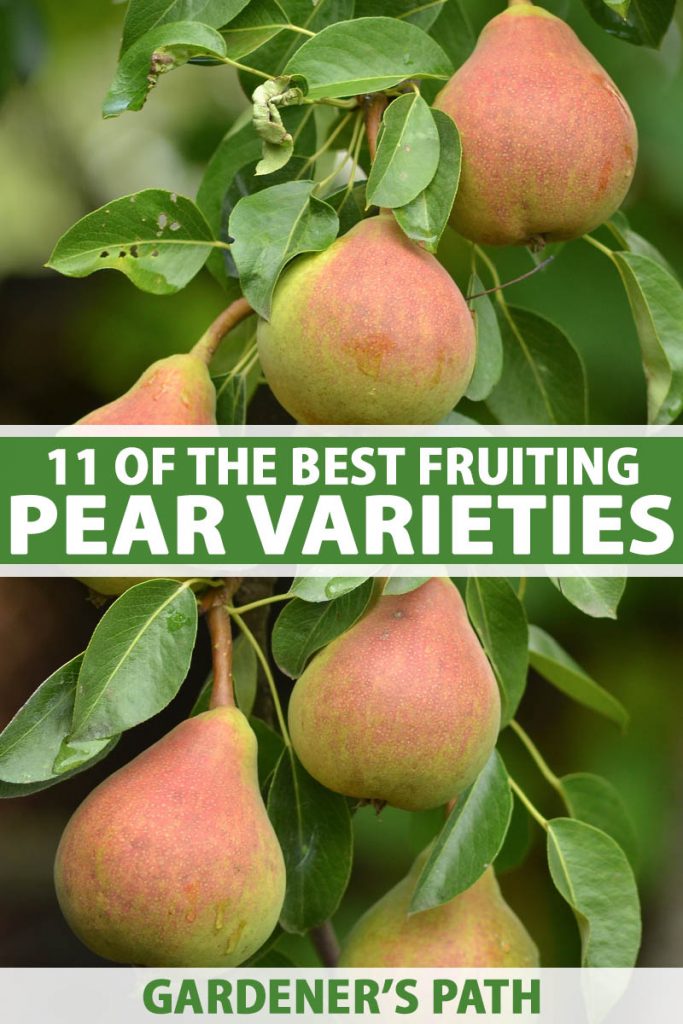

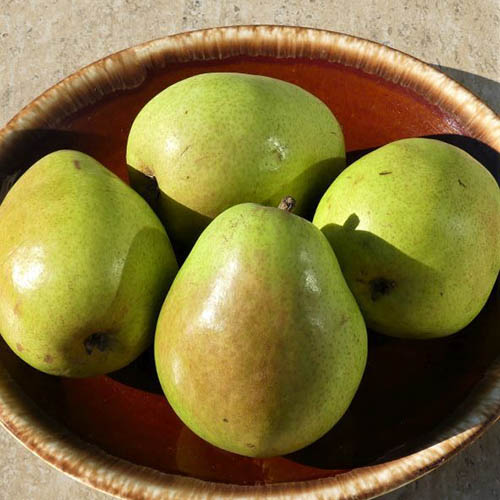

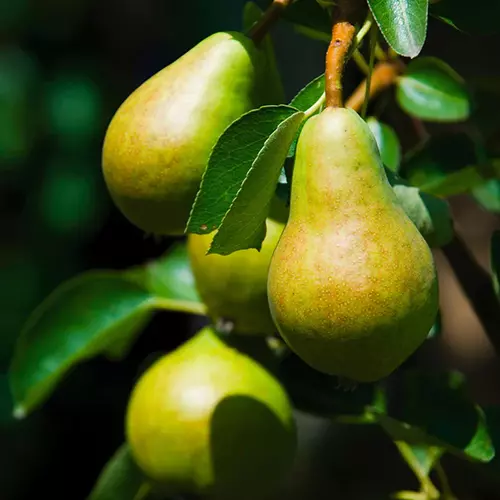
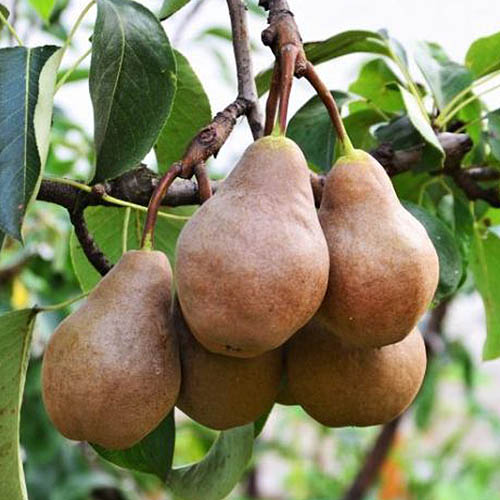
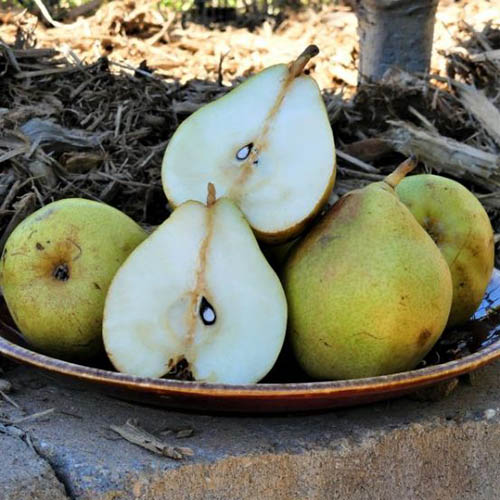


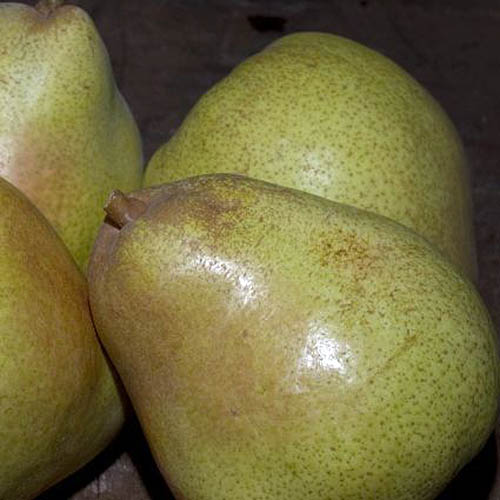
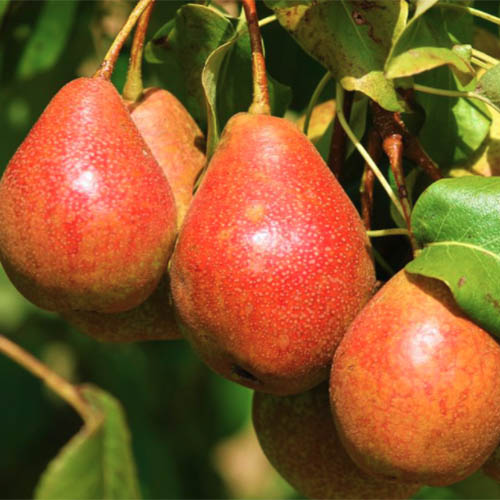

Good products. I need a variety that can perform well on mountain slopes.
I can recommend the Clapp’s pear – it’s a large, long fruit, pale yellow when ripe, creamy & sweet with smooth flesh, & juicy.
The sun side will have a pink cheek.
The mature tree reaches 18 to 20-ft.
They’re long lived, & bear well.- be sure to pick the fruits BEFORE they ripen, as if left to ripen on the tree, the flesh around the core will go mushy.
Picked at the transition when they’re full sized but light yellow-green, NOT yellow, they will ripen off the tree beautifully, & be sound clear thru.
???? Enjoy!
Good to know, thanks for recommendation Terry!
Thanks for the preparation of the best varieties of pear. I want to just add some more pear varieties like Santa Maria, Abate Fetel and Red Williams.
Thanks for reading Abdul.